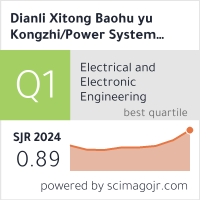A LITERATURE REVIEW ON THE APPLICATIONS OF TRI-BAND MIMO ANTENNAS IN MULTI-STANDARD SUB-6 GHZ SYSTEMS
Keywords:
Tri-band MIMO antenna, Sub-6 GHz, 5G communication, Isolation loss, Channel capacity loss, Mutual coupling, HFSS, FR4 substrate, Wireless networksAbstract
The demand for high-speed, low-latency, and reliable wireless communication has intensified with the rollout of 5G networks. To meet these requirements, Multiple-Input Multiple-Output (MIMO) antennas have become vital, especially in the Sub-6 GHz band due to its favourable balance between coverage and data rate. This study proposes the design and simulation of a compact Tri-band MIMO antenna operating at 2.4–2.5 GHz, 3.4–3.6 GHz, and 4.6–4.8 GHz, targeting Sub-6 GHz applications such as smart cities, IoT, cloud computing, and fixed wireless access. The research addresses challenges like mutual coupling, limited bandwidth, and size constraints in current MIMO antenna systems. Using HFSS software, antenna parameters including return loss, VSWR, channel capacity loss, and isolation loss are optimized. The fabricated prototype on an FR4 substrate is evaluated using a vector network analyser. The expected outcomes include enhanced efficiency, improved isolation (≥20 dB), and a channel capacity loss below 0.1, contributing significantly to next-generation wireless communication technologies.
The advancement of 5G technology has necessitated the development of compact, high-performance antennas to accommodate the demands for enhanced speed, reliability, and low-latency communications. This paper presents the design, simulation, and analysis of a compact tri-band MIMO antenna targeting the sub-6 GHz spectrum, operating specifically in the 2.4–2.5 GHz, 3.4–3.6 GHz, and 4.6–4.8 GHz frequency bands. The design tackles critical challenges including mutual coupling, limited bandwidth, and size constraints, using HFSS simulation and FR4 substrate fabrication. The proposed antenna demonstrates improved performance parameters including isolation loss >20 dB, VSWR <2, and channel capacity loss <0.1, making it suitable for modern 5G IoT, smart city, and wireless communication systems.





